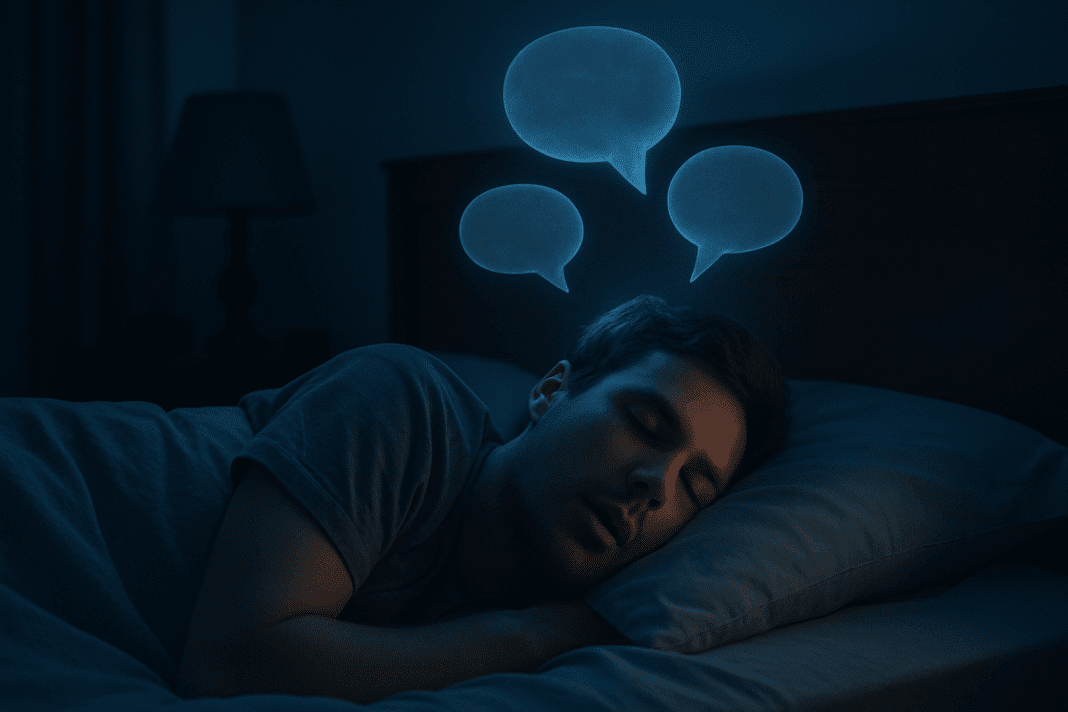Sleep is often romanticized as a sanctuary of peace, a place where the body restores and the mind resets. Yet for many, the experience of sleep is punctuated by involuntary utterances, cryptic phrases, and, at times, full conversations. This phenomenon, known as sleep talking, can be puzzling for the speaker and their sleep partner alike. Understanding what causes sleep talking is essential not only for addressing potential sleep disorders but also for uncovering the subtle dynamics of brain activity during rest. As researchers deepen their exploration into the neurological underpinnings of sleep, it becomes increasingly clear that sleep talking is more than just a harmless quirk—it can be a signpost pointing to larger patterns of cognitive and emotional health.
The term sleep talking, or somniloquy, refers to the act of speaking aloud during sleep without being aware of it. It may occur as isolated words, mumbling, or articulate speech, often surprising in its clarity. Though it is usually benign, its presence can cause distress, disrupt sleep, or embarrass the individual upon discovery. For some, the episodes are rare and fleeting; for others, they are frequent and intense. The variability itself raises deeper questions: What causes sleep talking in adults versus children? Is it purely neurological, or does emotional stress play a role? This article delves into these questions, examining the scientific, psychological, and practical dimensions of sleep talking to offer comprehensive insights.
You may also like: Essential Tips on How to Take Deep Sleep and Fight Everyday Fatigue
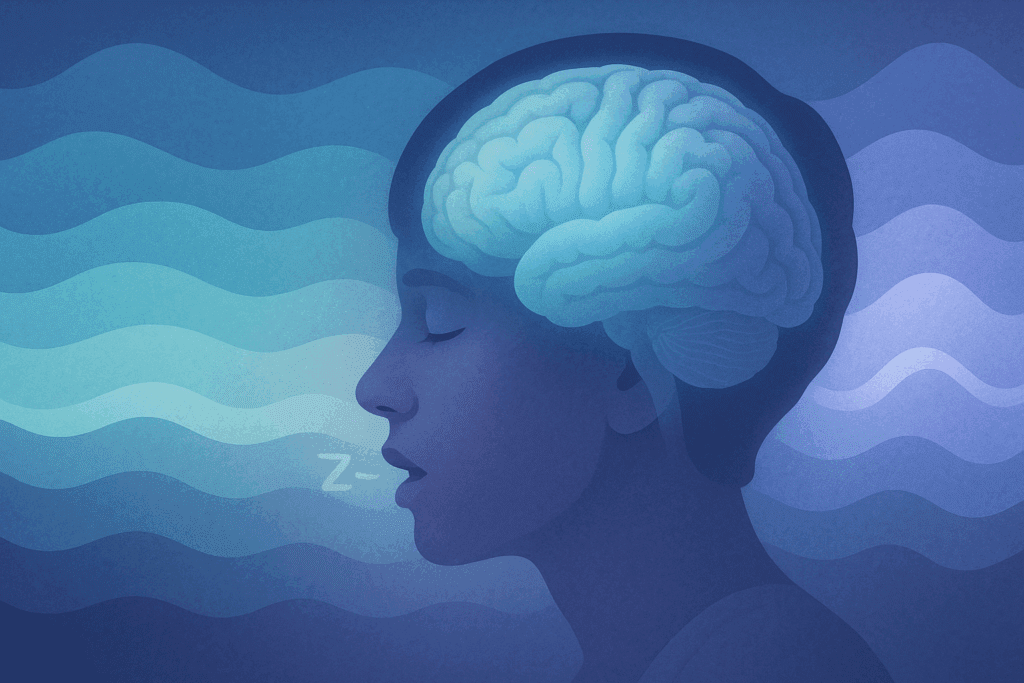
Defining Sleep Talking: From Mild Quirks to Clinical Phenomena
Sleep talking exists along a broad spectrum, ranging from sporadic murmurs to coherent dialogues. It is classified as a parasomnia, a group of sleep disorders characterized by abnormal movements, behaviors, or perceptions occurring during sleep. Sleep talking can happen during any stage of sleep, though it is most commonly associated with lighter stages, particularly during rapid eye movement (REM) and non-REM stages 1 and 2. The frequency and complexity of speech tend to vary by sleep stage. During REM sleep, which is when most dreaming occurs, the brain is active but the body remains paralyzed, theoretically inhibiting physical actions. Yet some vocalization can bypass this safeguard, manifesting as spoken fragments of dreams.
The prevalence of sleep talking decreases with age. It is more common in children, affecting nearly half at some point, but fewer than 5% of adults report regular episodes. Nonetheless, its occasional appearance in adults prompts further inquiry. Researchers have found that genetic predisposition, stress, sleep deprivation, and certain medications may all contribute to its emergence. These factors can influence both the frequency and intensity of episodes. While often harmless, persistent sleep talking may indicate underlying conditions such as sleep apnea, REM sleep behavior disorder, or nocturnal seizures, particularly if accompanied by other parasomnias like sleepwalking or night terrors.
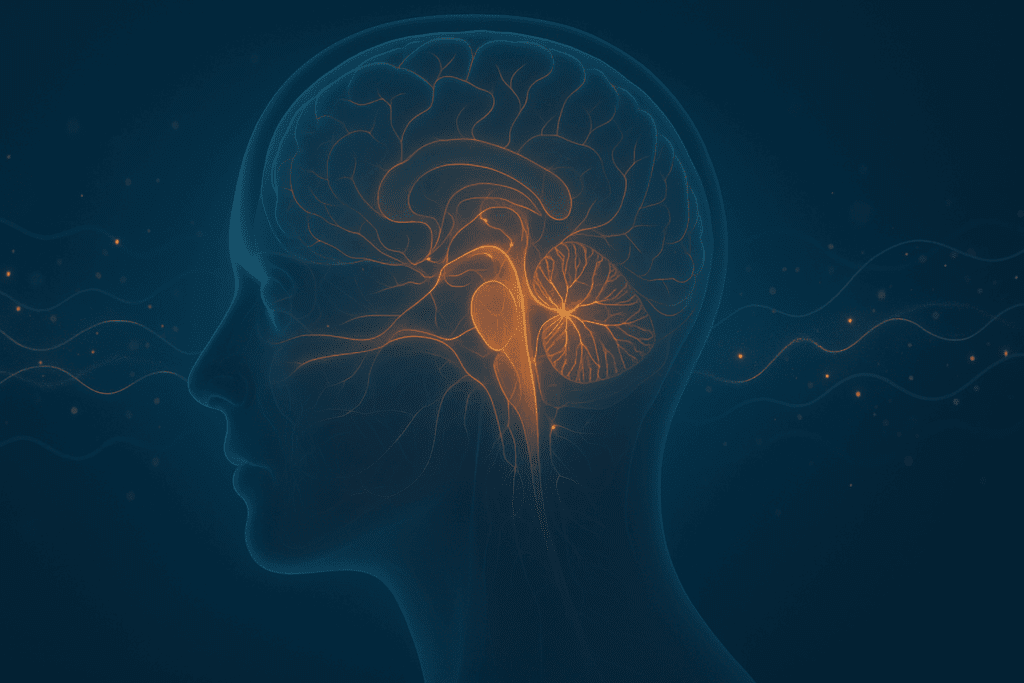
What Causes Sleep Talking? The Neurological and Genetic Perspective
One of the most pressing questions in the study of sleep behavior is what causes sleep talking at the neurological level. The answer appears to lie in the delicate balance of neurotransmitter activity and brain region coordination during sleep. During normal REM sleep, the brain is highly active, particularly in areas involved in memory consolidation and emotion regulation, such as the hippocampus and amygdala. The body, however, is usually immobilized due to the release of inhibitory neurotransmitters like gamma-aminobutyric acid (GABA). When this inhibitory system malfunctions or is incomplete, fragments of conscious behavior—like speaking—can seep through.
From a genetic standpoint, sleep talking often runs in families. Twin studies have shown a significantly higher concordance rate for parasomnias in monozygotic twins compared to dizygotic ones, suggesting a strong hereditary component. Specific gene variants affecting circadian rhythm regulation, arousal thresholds, and neurotransmitter balance may predispose individuals to sleep talking. However, these genetic factors do not operate in isolation. Environmental influences, such as chronic stress or inconsistent sleep schedules, can exacerbate tendencies rooted in genetics. Thus, what causes sleep talking often involves a confluence of inherited traits and situational triggers, each amplifying the other in complex ways.
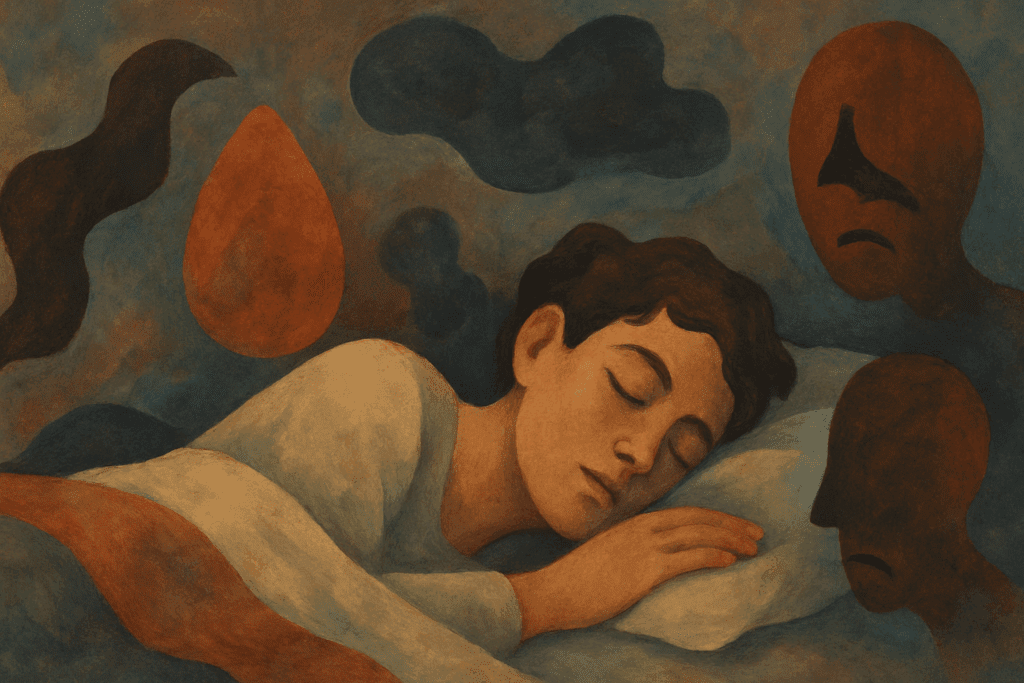
The Role of Stress and Emotional Turbulence in Sleep Talking
Among the most overlooked but impactful contributors to sleep talking are psychological stress and emotional dysregulation. Emotional processing does not cease during sleep; in fact, dreams are often the brain’s method of integrating emotionally charged experiences. When emotional arousal is heightened, whether due to anxiety, grief, or daily tension, the likelihood of disrupted sleep and parasomnias increases. Sleep talking in these cases may serve as a psychological outlet, an unconscious verbalization of unresolved concerns.
Studies have shown that individuals undergoing significant life transitions—such as divorce, job loss, or relocation—are more likely to exhibit parasomnias, including talking while sleeping. In such instances, the content of the speech may be directly or symbolically related to waking concerns. Though often incoherent, these utterances can offer glimpses into the dreamer’s emotional world. Mental health conditions such as depression and post-traumatic stress disorder (PTSD) are also associated with increased parasomnia activity. In therapeutic contexts, recognizing patterns in sleep talking can sometimes aid in understanding emotional triggers that remain hidden during waking hours.
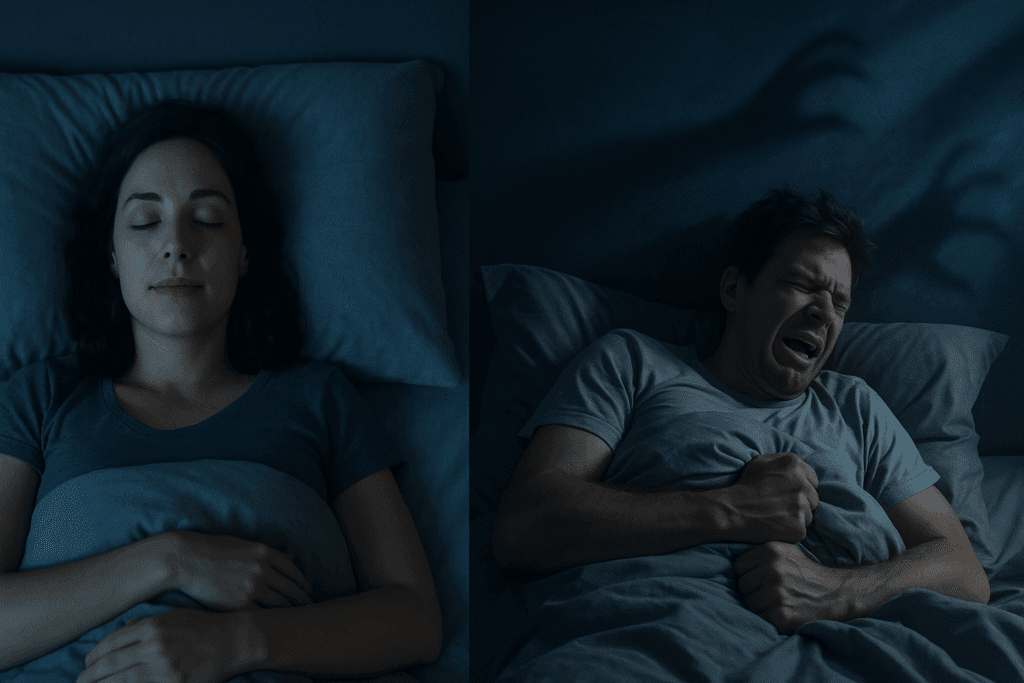
What Causes Sleep Talking in Adults? Distinguishing Occasional Events from Red Flags
While occasional sleep talking in adults is usually benign, frequent or dramatic episodes warrant closer scrutiny. Adults who suddenly begin talking while sleeping after years of quiet slumber may be experiencing more than just stress. Medical evaluations often seek to rule out serious neurological or psychiatric conditions. REM sleep behavior disorder (RBD), for instance, is marked by vivid, often violent dream enactments, and may be a precursor to neurodegenerative diseases such as Parkinson’s. Unlike standard sleep talking, RBD episodes often involve shouting, emotional speech, or even physical actions.
In addition, medications that alter brain chemistry, such as antidepressants, sedatives, and beta-blockers, may induce parasomnia symptoms, including sleep talking. Substance use, particularly alcohol and recreational drugs, can disrupt sleep architecture and provoke abnormal behaviors. Sleep apnea, a condition involving interrupted breathing during sleep, can also lead to fragmented sleep cycles and parasomnia overlap. Identifying what causes sleep talking in adults thus involves a multi-pronged assessment, encompassing medical history, lifestyle habits, and psychological well-being. Polysomnography, or overnight sleep studies, can provide definitive insights into sleep stages and detect abnormal events that might otherwise go unnoticed.
How Brain Activity and Sleep Stages Influence Verbalization
The architecture of sleep plays a vital role in determining when and why sleep talking occurs. Sleep unfolds in cycles of approximately 90 minutes, alternating between non-REM and REM stages. Non-REM sleep is divided into three stages, each characterized by progressively deeper sleep. During stages 1 and 2, the brain is transitioning from wakefulness to deeper rest, and the body is not yet fully relaxed. These lighter stages are fertile ground for brief episodes of speech, typically consisting of nonsensical phrases or mumbles.
In contrast, REM sleep is where dreaming peaks, and the mind is highly active. Although muscle atonia typically prevents movement, the vocal cords are sometimes less inhibited, allowing speech to emerge. The content of REM-based sleep talking is often more elaborate and emotionally charged, reflecting the dreamer’s inner narrative. Neuroimaging studies reveal that areas involved in language processing, such as Broca’s and Wernicke’s areas, may show intermittent activation during REM sleep in individuals prone to sleep talking. These findings suggest that the speech observed during sleep is not random but rooted in meaningful, albeit unconscious, cognitive processes.
Can Trauma and Nightmares Trigger Sleep Talking?
The connection between trauma and sleep disturbances is well-documented, and sleep talking is no exception. Individuals with a history of trauma, particularly those diagnosed with PTSD, are significantly more likely to talk during sleep. Nightmares, flashbacks, and heightened arousal can disrupt sleep continuity and lower the threshold for parasomnia behaviors. In such cases, sleep talking may serve as an unconscious reenactment or verbal processing of traumatic memories.
Children who have experienced early life trauma may be especially vulnerable. For them, sleep talking often appears alongside other sleep disturbances, such as bedwetting, sleepwalking, or frequent night awakenings. Addressing trauma through therapy, medication, or lifestyle changes can reduce the occurrence of these symptoms. Importantly, while sleep talking alone is not a definitive indicator of trauma, its presence in conjunction with emotional distress or a known history of trauma should prompt further evaluation. Mental health support plays a crucial role in mitigating not only the psychological aftermath of trauma but also its nocturnal manifestations.
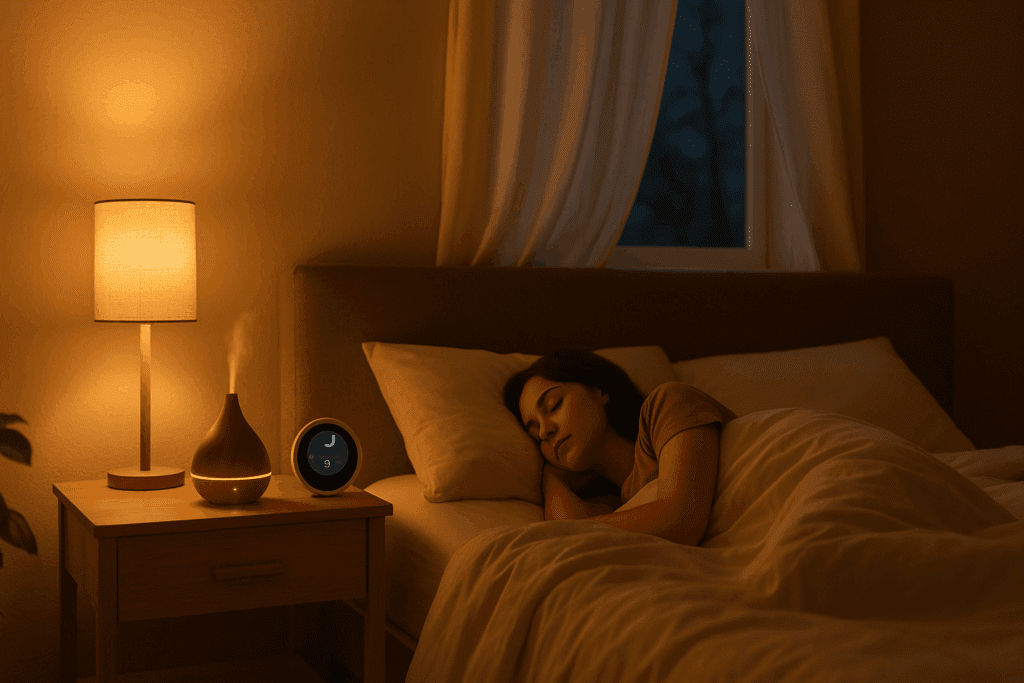
Understanding How to Stop Sleep Talking: Practical and Clinical Interventions
For individuals and families seeking guidance on how to stop sleep talking, the path often begins with identifying and managing triggers. The first step is to establish a consistent sleep routine, as irregular sleep patterns are a common contributor to parasomnias. Going to bed and waking up at the same time each day helps regulate circadian rhythms and stabilizes sleep architecture. Sleep hygiene practices, such as limiting screen time before bed, avoiding caffeine late in the day, and creating a calming bedtime environment, can also reduce the likelihood of disruptive behaviors.
Psychological interventions, including cognitive-behavioral therapy (CBT), are beneficial for those whose sleep talking is linked to stress or anxiety. CBT helps individuals develop coping strategies, challenge negative thought patterns, and manage emotional arousal. For cases involving underlying medical conditions, treatment must be tailored accordingly. For instance, individuals with sleep apnea may benefit from continuous positive airway pressure (CPAP) therapy, while those with RBD may require medication like clonazepam or melatonin. Consulting a sleep specialist is essential when sleep talking is frequent, intense, or accompanied by other symptoms such as physical movement or disrupted breathing.
Sleep Talking and Its Social Implications: From Humor to Harm
While sleep talking is often dismissed as amusing or quirky, its social implications can be more complex. For couples sharing a bed, frequent vocalizations may disrupt the partner’s sleep and strain the relationship. Embarrassment over content revealed during sleep talking can lead to anxiety or self-consciousness, especially if it involves sensitive topics. Children who talk in their sleep may become the subject of ridicule or misunderstanding, particularly in communal sleeping environments like camps or sleepovers.
Despite these challenges, open communication and education can alleviate much of the discomfort. Partners should discuss their experiences calmly, avoiding judgment or mockery. In families, explaining that sleep talking is a common and typically harmless phenomenon can prevent unnecessary worry or shame. In cases where content is disturbing or emotionally charged, therapeutic support may be warranted. Ultimately, understanding and empathy go a long way in managing the social dimensions of sleep talking, transforming it from a source of stress to an opportunity for connection and care.
What Causes Sleep Talking? Insights from Sleep Research and Case Studies
Sleep science has made remarkable strides in elucidating what causes sleep talking, thanks in part to advanced imaging techniques, longitudinal studies, and detailed sleep diaries. One study from the Lyon Neuroscience Research Center analyzed hundreds of recorded sleep talking episodes and found that over 50% involved negative or argumentative content. This finding suggests that sleep talking may be closely linked to emotional regulation, particularly in response to interpersonal conflict or stress. Another study at Stanford University examined brain activity in individuals with frequent sleep talking and found unique patterns of thalamocortical connectivity, indicating that certain neural circuits may be predisposed to spontaneous activation during sleep.
Case studies add further depth to this understanding. In one documented instance, a man in his thirties began talking extensively during sleep after a severe car accident, though he had no prior history of parasomnias. Neuropsychological evaluation revealed mild traumatic brain injury and elevated anxiety levels, supporting the notion that sleep talking can emerge as a response to neurological and emotional trauma. In another case, a young woman who spoke entire sentences in her sleep was found to be experiencing chronic sleep deprivation due to overwork and academic pressure. After improving her sleep hygiene and reducing stress, the episodes subsided entirely. Such real-world examples underscore the multifaceted nature of sleep talking and the importance of a holistic approach to diagnosis and treatment.
Talking While Sleeping: Myths, Misconceptions, and the Need for Awareness
Despite growing scientific clarity, sleep talking remains shrouded in myths and misconceptions. Some people believe that those who talk while sleeping are revealing deep secrets or unconscious truths. While the content of sleep talking may occasionally reflect underlying concerns, it is rarely coherent enough to be interpreted as intentional communication. Speech produced during sleep is often fragmentary, illogical, or entirely disconnected from waking thoughts.
Another common myth is that sleep talking always indicates a mental health problem. In reality, most cases are harmless and transient. However, awareness is key. Ignoring persistent or escalating episodes can delay diagnosis of more serious sleep disorders. Public education campaigns and accessible resources can help destigmatize sleep talking, encouraging individuals to seek help when needed. Parents, educators, and healthcare providers all play a role in fostering informed conversations about sleep health, moving beyond superstition and toward scientific understanding.
Frequently Asked Questions (FAQ) About Sleep Talking and Related Disruptions
What causes sleep talking during periods of emotional burnout or chronic stress?
Sleep talking during emotionally demanding periods may arise from the brain’s effort to process and compartmentalize unresolved psychological tension. Emotional burnout alters the balance between the sympathetic and parasympathetic nervous systems, disrupting the natural rhythm of sleep stages. As a result, transitions between REM and non-REM sleep become less stable, increasing the likelihood of fragmented speech episodes. Chronic stress has also been shown to alter cortisol levels, which may heighten brain reactivity even during rest, making verbal outbursts more likely. In high-stress professions or caregiving roles, sleep talking might be an unconscious method of emotional release, where the mind replays concerns that the waking brain has suppressed.
Is sleep talking associated with creativity or cognitive flexibility?
Interestingly, some research suggests that individuals who frequently talk in their sleep may have heightened cognitive flexibility or active dream lives. Theories rooted in neuropsychology propose that creative minds often maintain active associative networks, which can persist during sleep. This heightened nocturnal brain activity might spill over into verbal expressions, especially during REM sleep. While not definitive, anecdotal accounts from artists, writers, and musicians suggest that sleep talking may sometimes reflect creative problem-solving processes continuing during rest. However, it’s important to distinguish these non-pathological episodes from more concerning causes of sleep talking in adults that may require clinical attention.
What causes sleep talking in adults following neurological injuries?
Adults who have sustained brain injuries—such as concussions, strokes, or trauma affecting the frontal cortex—may experience an increased incidence of parasomnias, including sleep talking. Damage to regions governing inhibition and speech regulation can lead to impaired suppression of language during sleep, particularly in transitional stages. For these individuals, talking while sleeping may persist longer than typical recovery patterns suggest, especially if the injury affects the brain’s limbic or language centers. Rehabilitation efforts that include cognitive therapy or neurofeedback have shown promise in reducing such episodes. This suggests that, in some neurological cases, sleep talking may be mitigated through targeted reconditioning of cognitive-linguistic functions.
Can sleep talking predict future sleep disorders or cognitive decline?
While sleep talking by itself is not diagnostic, emerging evidence suggests it can sometimes precede more serious neurological or sleep disorders. For instance, sleep talking that begins later in life and escalates in intensity could be an early sign of REM sleep behavior disorder or neurodegenerative conditions like Lewy body dementia. These diseases often begin with subtle parasomnias that gradually evolve into more disruptive symptoms. Monitoring patterns over time—especially if speech is accompanied by movement or confusion upon waking—can provide early diagnostic clues. This underscores the importance of not dismissing frequent sleep talking in adults as merely a nuisance.
What strategies are most effective for couples dealing with one partner’s sleep talking?
When one partner regularly engages in sleep talking, it can strain the sleep quality of both individuals and potentially lead to relationship tension. To address this, couples can start by adjusting the sleeping environment: using white noise machines, separate bedding, or earplugs may reduce disruption. More importantly, open and compassionate communication about how the episodes affect each person is vital to preserving intimacy and reducing misunderstandings. Sleep tracking apps that record night-time behavior may help identify patterns and even humorously defuse tension. If episodes are frequent or distressing, pursuing guidance from a sleep specialist together can reinforce mutual support while exploring how to stop sleep talking as a shared goal.
How does alcohol or caffeine consumption influence talking while sleeping?
Both alcohol and caffeine can significantly alter sleep architecture, often increasing the likelihood of talking while sleeping. Alcohol initially acts as a sedative but disrupts the second half of the sleep cycle, often suppressing REM and leading to rebound effects that may include parasomnias. Caffeine, depending on the time of consumption and individual metabolism, can delay the onset of deep sleep stages and increase the duration of light sleep, where sleep talking is more common. In combination, these substances reduce overall sleep quality and increase nighttime arousals, which may trigger speech. Reducing or timing intake strategically, especially several hours before bed, is a practical step toward minimizing such nocturnal vocalizations.
What causes sleep talking in adults who also suffer from anxiety disorders?
For adults living with anxiety disorders, the sympathetic nervous system remains overactive even during sleep, potentially preventing the body from reaching the restorative depths of slow-wave sleep. This hypervigilant state can manifest through fragmented sleep cycles and vocal expressions of internal unrest. Anxiety-driven ruminations can carry over into dreams, increasing the likelihood of verbal outbursts during REM. Unlike stress-induced sleep talking, which may be situational, anxiety-related episodes often form chronic patterns unless the root condition is addressed. Incorporating anxiety-reduction techniques such as diaphragmatic breathing, EMDR therapy, or mindfulness-based stress reduction may reduce both the severity of anxiety and the occurrence of parasomnias.
Can sleep talking be triggered by diet or nutrient deficiencies?
Yes, certain nutritional imbalances may contribute to parasomnia behaviors, including sleep talking. Deficiencies in magnesium and B-vitamins—especially B6 and B12—can disrupt neurotransmitter function and sleep regulation. Magnesium, for instance, is essential for GABA activity, a calming neurotransmitter that reduces nerve excitability during sleep. Low levels may lead to lighter sleep and more frequent arousals, conditions under which sleep talking is more likely. While dietary adjustments alone may not fully explain what causes sleep talking, ensuring a nutrient-rich diet can play a supportive role in improving sleep quality and reducing the frequency of disturbances.
How to stop sleep talking using digital wellness and biofeedback tools?
Advancements in wearable technology and sleep-tracking devices have opened new possibilities for addressing sleep talking through biofeedback and digital wellness tools. Devices like smartwatches or sleep headbands now offer real-time data on sleep stages and can alert users to abnormal patterns over time. Some apps incorporate guided relaxation or auditory cues timed to sleep stages, helping users transition more smoothly through cycles and reduce parasomnia events. Additionally, biofeedback training using heart rate variability (HRV) can enhance parasympathetic tone, promoting deeper sleep and reducing disruptions. Although these tools are not cures, they offer innovative support for those exploring how to stop sleep talking with self-managed, data-informed strategies.
Is sleep talking more likely to occur during certain life transitions or hormonal shifts?
Major hormonal transitions—such as puberty, pregnancy, menopause, and even andropause—can significantly impact sleep structure, often making sleep talking more pronounced during these phases. Hormones like estrogen, progesterone, and testosterone all influence sleep latency, REM duration, and arousal thresholds. During pregnancy, for example, fluctuating hormone levels combined with physical discomfort and anxiety about childbirth can create a perfect storm for fragmented sleep and parasomnias. Adolescents, undergoing both hormonal and neurological changes, may exhibit more vivid dreams and increased sleep talking, especially when coupled with academic or social pressures. These transitional phases highlight that understanding what causes sleep talking requires a multidimensional approach, one that considers not only psychological or neurological factors but also physiological and developmental influences.
Conclusion: Unraveling the Mystery of Sleep Talking Through Science and Self-Awareness
As our understanding of sleep deepens, so too does our appreciation for its nuances and anomalies. What causes sleep talking is no longer a question relegated to folklore or curiosity; it is a subject of legitimate scientific inquiry with implications for mental, neurological, and emotional well-being. From its roots in brain activity and genetic predisposition to its connections with stress, trauma, and lifestyle, sleep talking is a window into the unconscious mind’s dialogue with itself.
Effective interventions begin with awareness. Whether the goal is to stop sleep talking entirely or to understand its role in one’s broader health picture, the journey starts with observation, education, and empathy. For some, minor adjustments in routine and sleep hygiene may be sufficient. For others, more in-depth medical or psychological support may be necessary. What remains constant is the need for a compassionate approach, one that recognizes sleep talking not as an oddity but as a clue in the ongoing puzzle of human consciousness.
In a world increasingly focused on mental health, emotional resilience, and holistic wellness, even our midnight murmurs deserve a closer listen. By tuning into these nighttime narratives, we gain not just better sleep but deeper insight into who we are—in dreams and in waking life alike.


